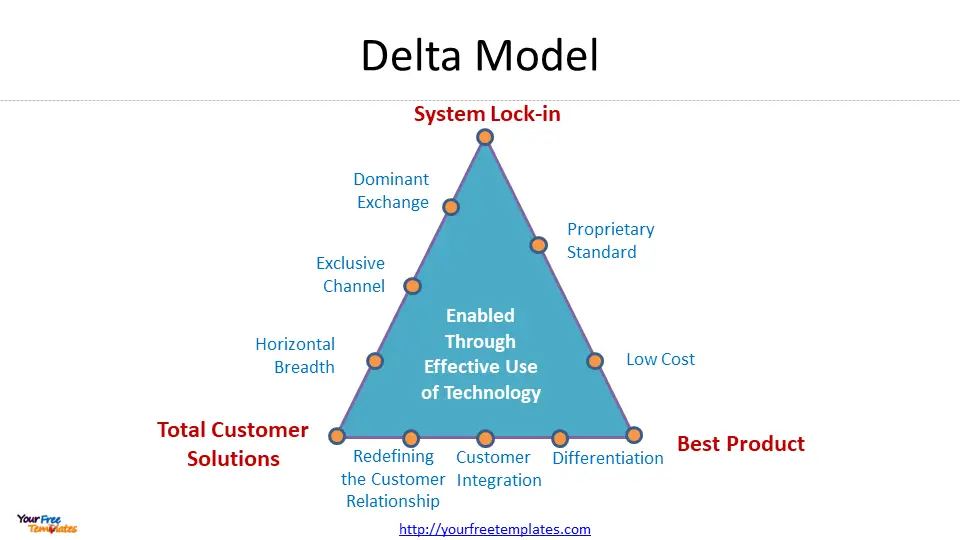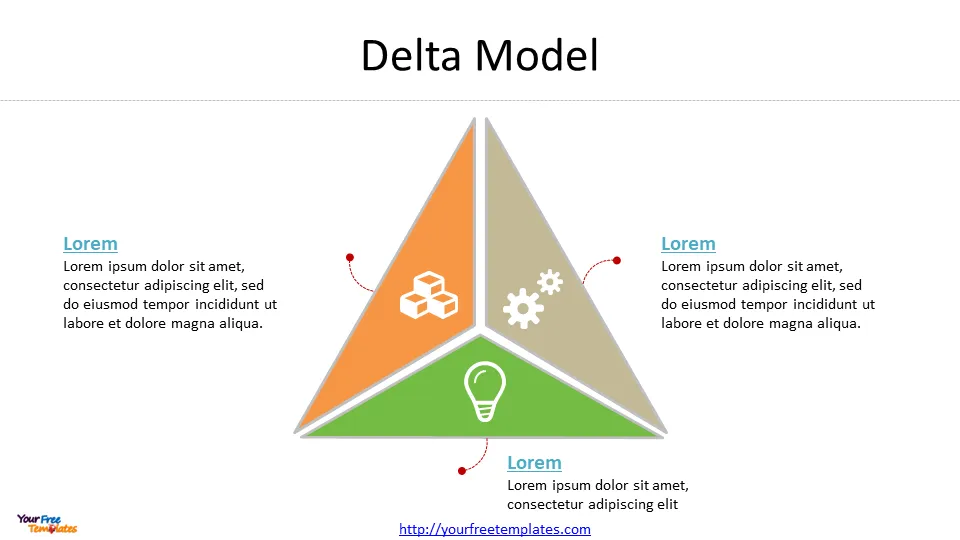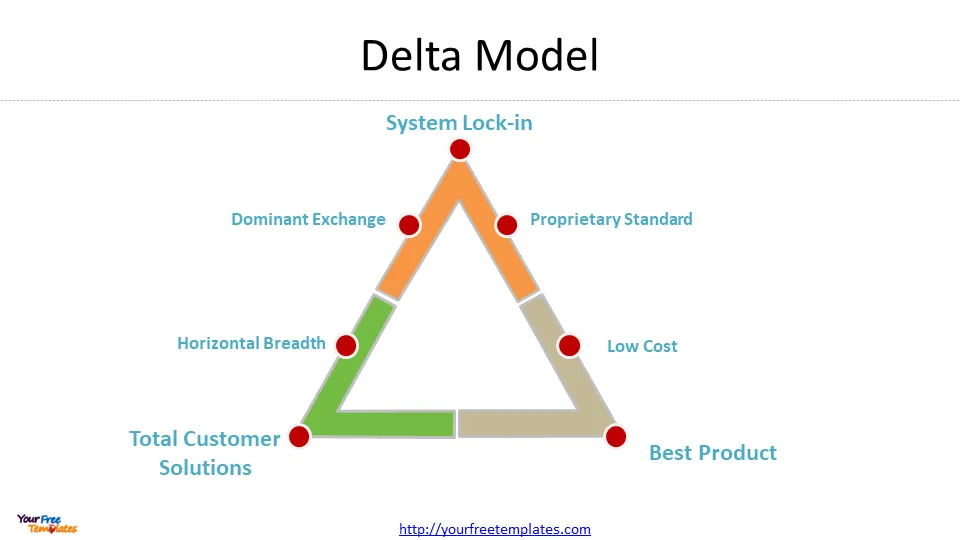Delta model (from the Greek letter Delta, meaning transformation and change) is a customer-centric approach to strategic management. It is based on consumer economics instead of product economics. Dean Wilde and Arnoldo Hax developed the customer-centric model to create a strong bond between the company and its customers. In developing the delta model, a large amount of research was conducted into the factors contributing to sustainable profitability at the Massachusetts Institute of Technology (MIT).
As the same diagram PowerPoint template series, you can also find our Data Mining, marketing segment, Porter’s five forces, BCG Matrix, SWOT analysis, Artificial Intelligence, National Diamond and BlockChain PowerPoint templates.
The Purpose Behind “Delta model.”
In the business world, changes have been so enormous that existing managerial frameworks have become invalid or incomplete. E-business and e-commerce are enabled by the incredible technology surrounding the internet, which has created a massive potential for communication. The goal was to get companies to stop focusing so much on competitors and to place more emphasis on customers.
An eight-position Delta Model with three main strategic options.
Delta model’s components
A strategic triangle can be used to illustrate the delta model (see figure 1). The three points are system lock-in, best customer solutions, and the best product. In addition to dominance, system lock-in allows complementary share to be achieved since it focuses on system economics rather than product-centered economics, which makes it highly sustainable. To gain customer share, the best customer solutions require cooperation.

A company’s best product gives it an edge over the competition, which increases market share. These strategic points help us identify new sources of profit.
Delta model vs. Porter’s five forces
Porter’s five forces focus on competition, while Delta ignores it. A Porter force is the bargaining power of customers (haggling), while a Delta model focuses on building customer relationships rather than seeing them as competitors. Putting the customer first and creating a solid customer relationship may mean that Delta can stay at the same prices, which is a negative of the Delta model.

Haxioms
Haxioms are a set of principles, defined by Arnoldo Hax, that serve to conceptualize the Delta Model and challenge conventional wisdom about strategic thinking:
- Customers are the heart of the strategy.
- You don’t win by beating your competitors. Customer bonding is the key to success.
- The essence of strategy is not war but love.
- Customers, suppliers, and complementors should be included in your key constituencies instead of a product-centric mindset.
- Get to know your customer well. Each customer’s strategy is unique.
- A commodity can only exist in the mind of an inept person.
- Strategy is based on two principles; Segmentation of customers and customer value propositions and Organizational competencies.
- Strategic planning is a conversation among the company’s key executives to determine the organization’s direction.
- Experimentation is crucial; metrics are essential.

Final Words
Delta models provide managers with a framework for formulating and implementing effective company strategies for the benefit of their customers. The approach aims at implementing effective management and pro-consumer organizational business strategies. That is a consumer-centric strategy framework, which caters to the needs of consumers through business strategies and management frameworks. Using Hax’s Delta Model, three alternative approaches to implementing the Delta Model’s business management strategies are outlined in a diagrammatic representation called _The Strategic Triangle_
For other interesting maps, pls visit our ofomaps.com
Size:58K
Type: PPTX
[sociallocker]Aspect Ratio: Standard 4:3
Click the blue button to download it.
Download the 4:3 Template
Aspect Ratio: Widescreen 16:9
Click the green button to download it.
Download the 16:9 Template[/sociallocker]














